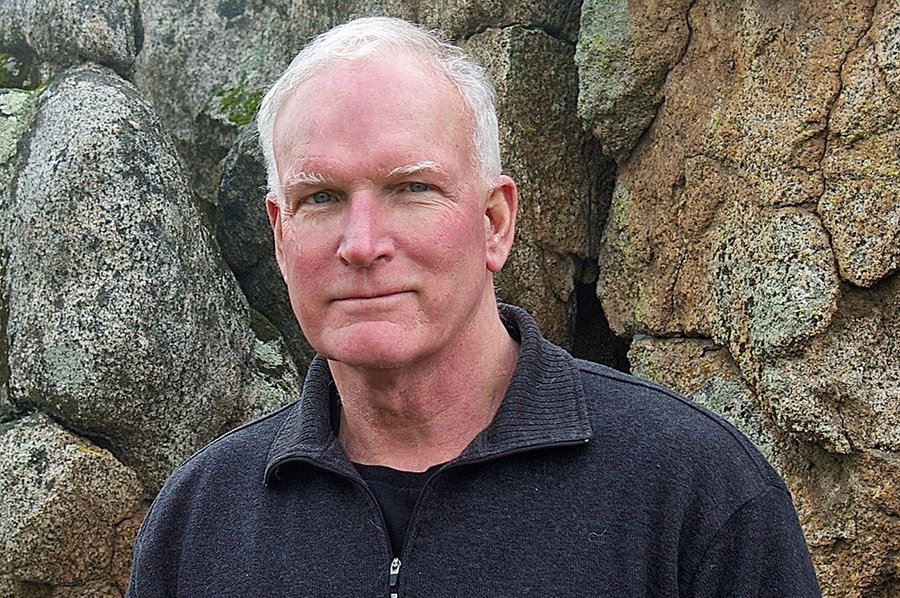 |
| Douglas Noll and his colleagues have taught hundreds of inmates how to resolve conflicts. (Courtesy of Douglas Noll) |
Douglas Noll was a trial lawyer for 22 years, but since leaving the courtroom, he has taught mediation techniques to inmates through the organization he cofounded, Prison of Peace.
MARCH 8, 2017 —This essay is part of an occasional series provided by our partner organization Encore.org, which is building a movement to tap the skills and experience of those in midlife and beyond to improve communities and the world. Read more stories and share yours at Encore.org/story.
My life really began after 50. I was a trial lawyer for 22 years. Through a gradual awakening, I realized that my calling was not in the courtroom, and in 2000, exactly two weeks after my 50th birthday, I left a successful trial practice in a major law firm to become a peacemaker.
Nearly a decade later, my colleague Laurel Kaufer received a request from an inmate serving time in a notorious facility, what was then the Valley State Prison for Women in Chowchilla, Calif.
The inmate wanted a professional mediator to teach 100 women sentenced to life without parole how to reduce the daily violence and conflict in the prison caused by gang members.
The request resonated deeply with me. I said to Laurel, “If this is for real, we should do it.”
Since turning to peacemaking, despite having mediated thousands of conflicts, I have faced ridicule, skepticism, and even hostility from my legal peers. Our culture views peacemaking as weak. I want to prove the naysayers wrong. If I can teach murderers to be peacemakers, no one can deny the power of mediation.
That’s how Prison of Peace began. Since 2009, Laurel and I have taught mediation techniques to hundreds of inmates. They, in turn, have touched the lives of thousands of other inmates and family members. Our 12-week curriculum cultivates empathy, problem-solving, and leadership skills. We help inmates who are emotionally shut down learn to open up and develop deep connections with others.
Our work has been established in four California prisons and the Los Angeles County jail system. With a grant from the California Department of Corrections and Rehabilitation for innovative programming, we’ll be launching Prison of Peace in six additional California prisons starting this spring. The Prison of Peace model has been reproduced in Greece, and programs are being planned in France and Italy.
I’ve also developed an online course, “It’s Pure Magic,” that teaches the fundamentals of the Prison of Peace curriculum. More than 1,000 people have taken it so far. And my fourth book, “De-Escalate: How to Calm an Angry Person in Seconds,” will be published in September. The book explains the skills we teach in Prison of Peace and how they apply to everyday life.
From its inception, Prison of Peace has empowered those who are incarcerated to be of service. Inmates progress from peacemaker to certified trainer, enabling them to create safer, more peaceful lives for themselves and others. By resolving conflicts and teaching the skills involved to their peers, Prison of Peace participants create durable programs in their institutions – and in their communities, after they return.
Prison of Peace welcomes participants serving life or long-term sentences; in fact, preference is given to those serving life without parole. Now, some people who’ve been released work with us, teaching peacebuilding skills in their communities.
I’m in my mid-60s now. I want to be passing on my knowledge, helping other people who have the passion to do this work. And I’m motivated to move it out of the prison environment and into the larger world. Shouldn’t we be teaching people the skills to prevent violence as soon as we possibly can?
If I can teach one kid, or one parent, how to listen – how to prevent violence and avoid prison – that’s powerful.
Permission to use this
material was granted by
Page created on 3/13/2017 1:46:20 PM
Last edited 3/13/2017 1:46:20 PM

